|
|
|
Val-St-Lambert (1825 - present) The first factories on the site were built in 1825 on the banks of the river Meuse (Maas) at Seraing, near Liege (Luik). With huge demand from European bourgeoisie, the site produced elaborately worked crystal, paperweights and goblets, and rapidly expanded into a sizable complex of factories, workshops and worker's homes. The factory also provided a school and a shop, etc. When the site in Seraing was full, the company established satellite production at Jemeppe (on the other side of the river), at Jambes (60 km upstream, near Namur and they were subsequently involved with the surviving glass sites further upstream, notably at Havre-ville (Doyen), Boussu and Manage (Scailmont) In 1900 VSL offered (for example) over 930 models of lampshade. It had become a major international company with a huge and ever-changing product range. In the period around 1900 VSL production rose to a peak of 160,000 items per day, (90% exported) and used factories throughout the area to produce a very diverse range of wares in crystal, pressed-, blown- and machine-made glass. Having copied techniques from Italian and French glass, the factory's international reputation made it the 'spider in the web' for the local glass industry and VSL often placed the international orders it received with smaller factories and subsidiaries. From sturdy car headlamps to delicate vases, from beer mugs to works of art; lampshades and ashtrays, punch-bowls and car mascots, architectural glass bricks, sculptures, bottles and jam-jars; in 1926 the Val-St-Lambert production, although run from the site at Seraing, was actually spread across a group of factories totalling 4,000 employees at work in Herbatte (1851-1934), Manage (Jumet), Jambes (1880-1931) and Jemeppe-sur-Meuse (1883-1952). As the glass industry crashed in 1928-35, most factories were closed, and the survivors changed over to specialised products. Scailmont became specialists in pressed glass, while Boussu focussed on domestic glass and 'fancy' items in the latest style. The Val-St-Lambert name survived the post-war period by down-sizing and specialising in handmade crystal. Since the 1970's the glass studios have struggled through several more periods of decreasing profitability, re-starts, and further cuts. Having survived four bankruptcies since 1950, the site now (in 2018) has been sold to a new owner, George Forrest, and has an exclusive crystal gallery showing recent production, with a museum and glass-making studio open for visitors. 
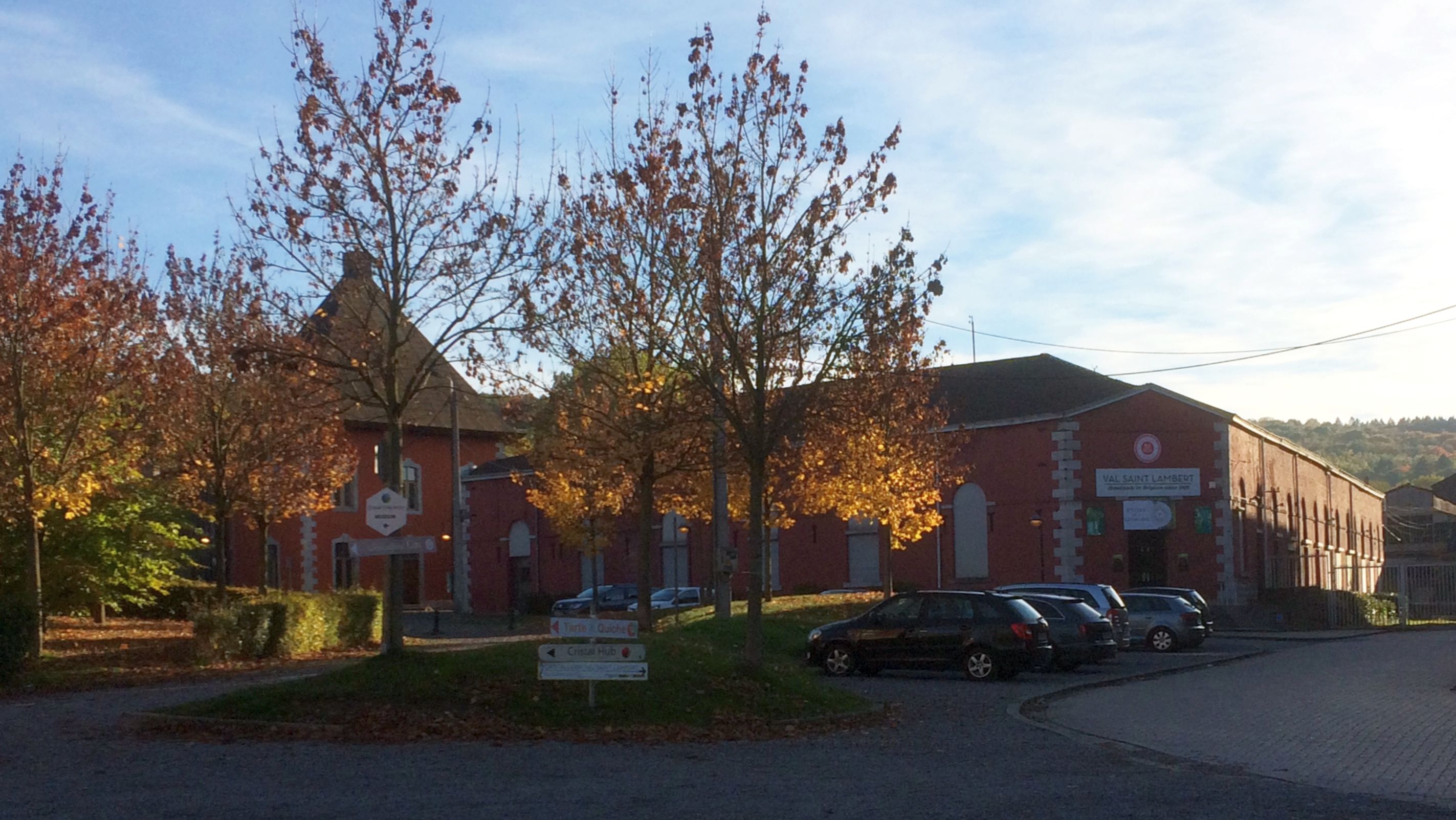 |
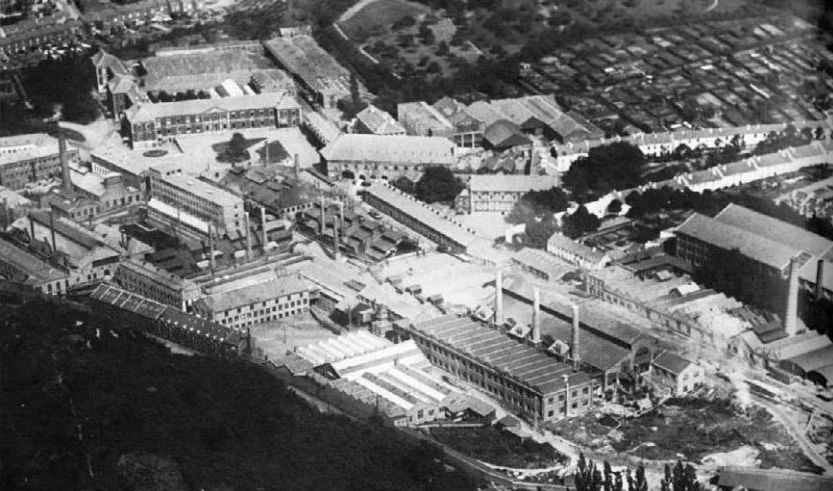   |
|
Design and Style in the 19th century
For most of the 19th century the factory had been famous for elaborately cut crystal which graced the stately homes of Europe, hours of craftsmanship were applied to geometrical cuts and hand-engraved images, a style culminating in 1894 with the tour de force 'Vase of Nine Provinces' ('Vase des neuf Provinces', in the Curtius Museum, Liege) Industrial production of diverse other glass products, stemware and pressed glass, encouraged a rapid expansion. |
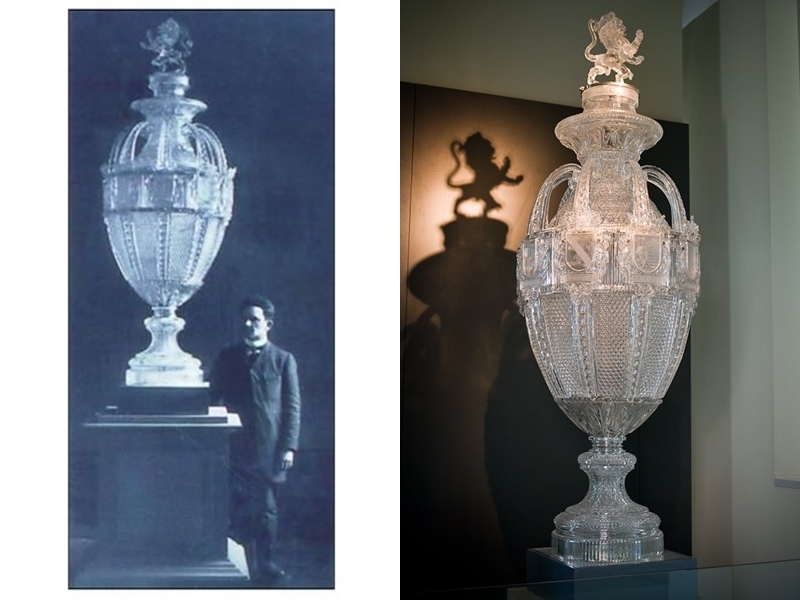
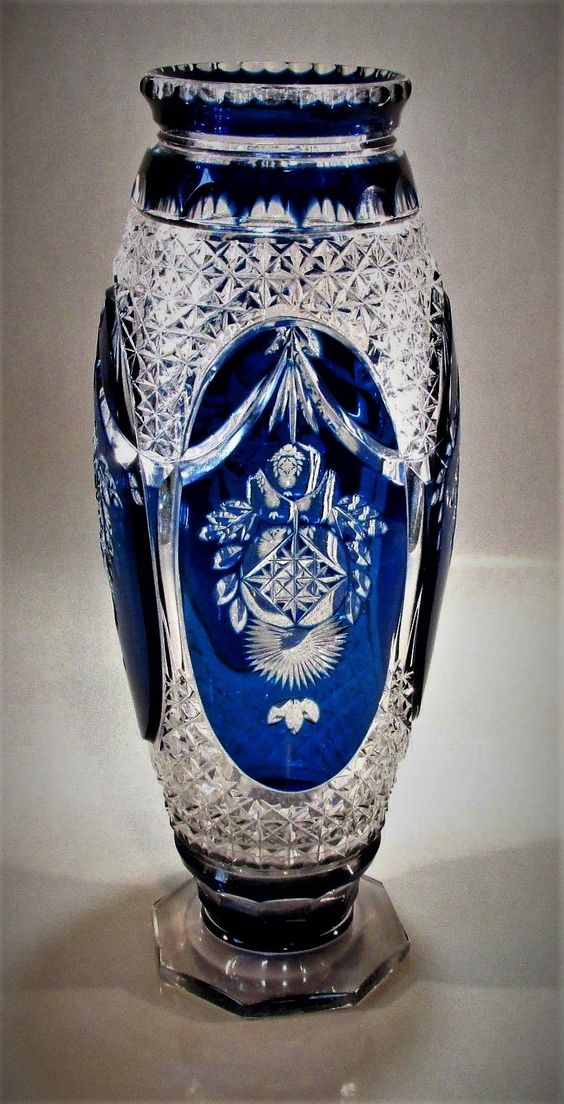
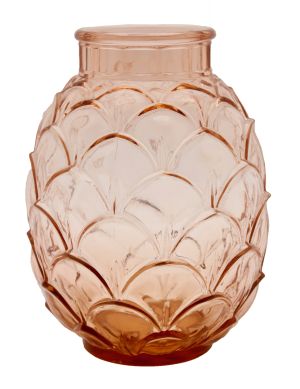
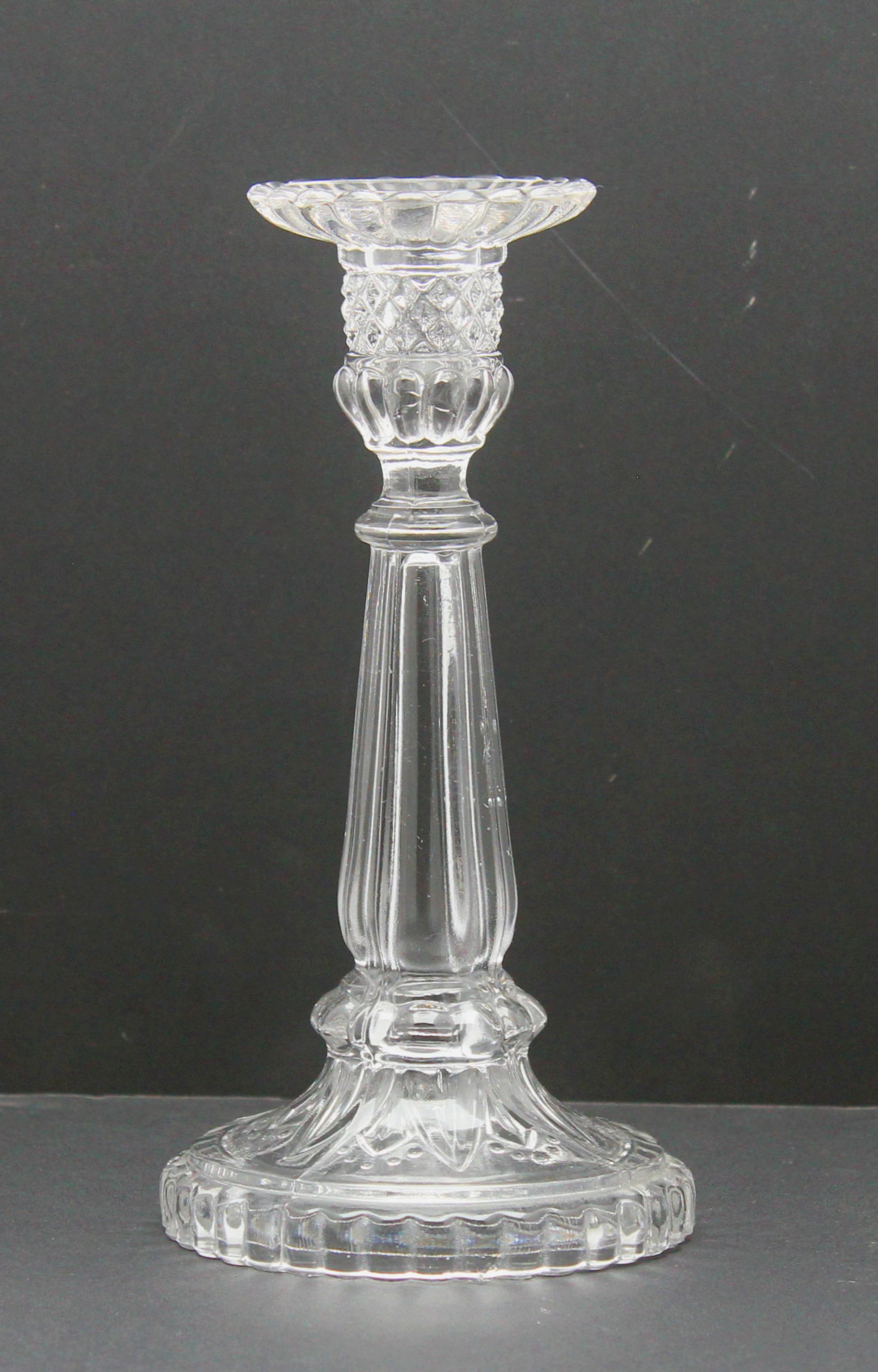
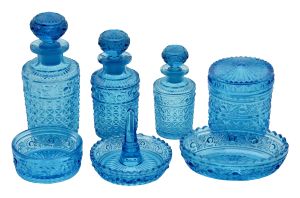
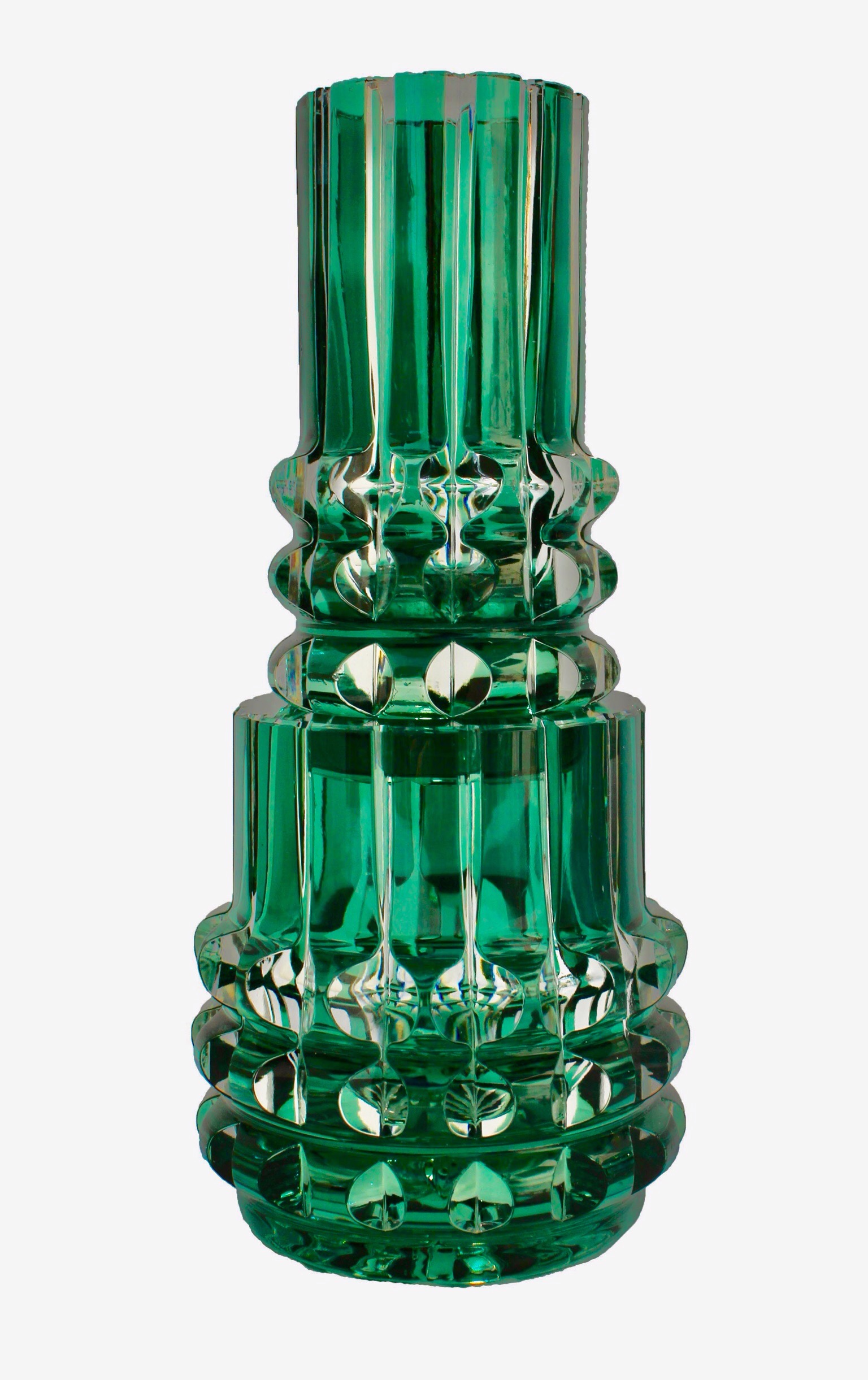
|
|
1900-1934 In the early 20th century VSL designers experimented with art-nouveau and -deco designs (such as cameo etched glass in the style of Nancy, and hand-painted decors that echoed Legras, often designed by Leon Ledru), but had limited success. With the factory fully recovered from the Great War, Joseph Simon took charge and was helped by Charles Graffart and Rene Delvenne. The international market declined again from 1934, although the company still managed to retain production capacity. |
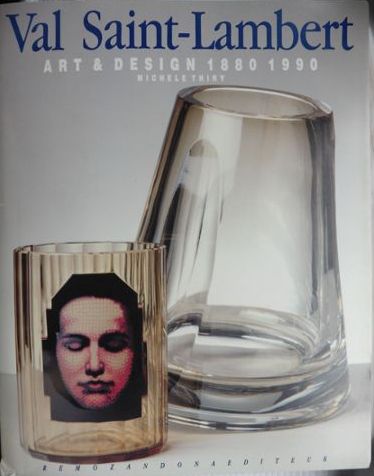
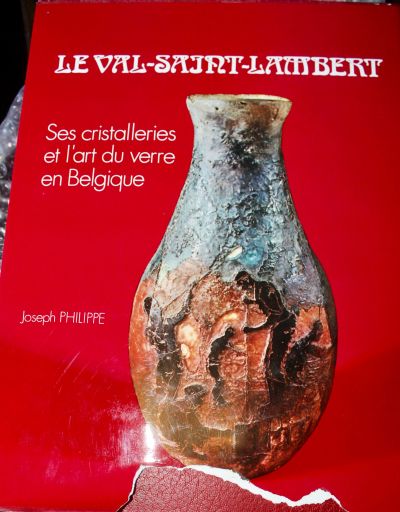
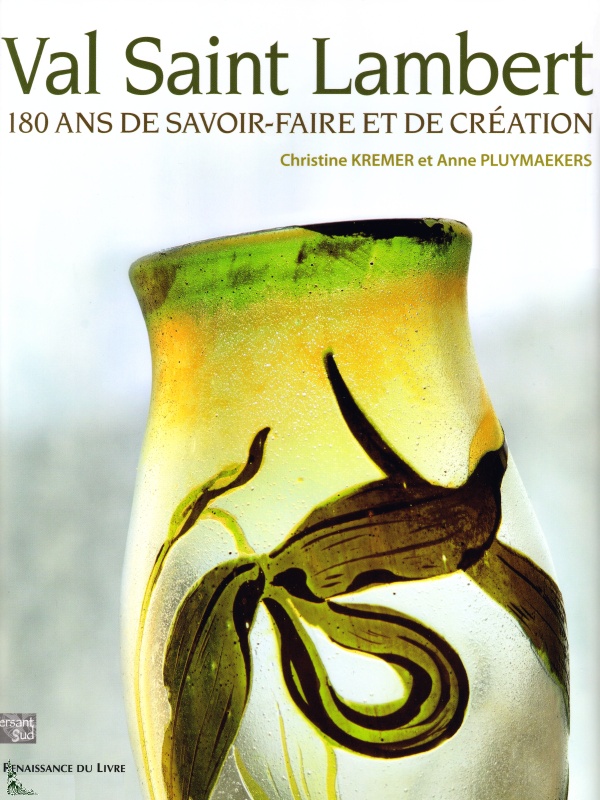
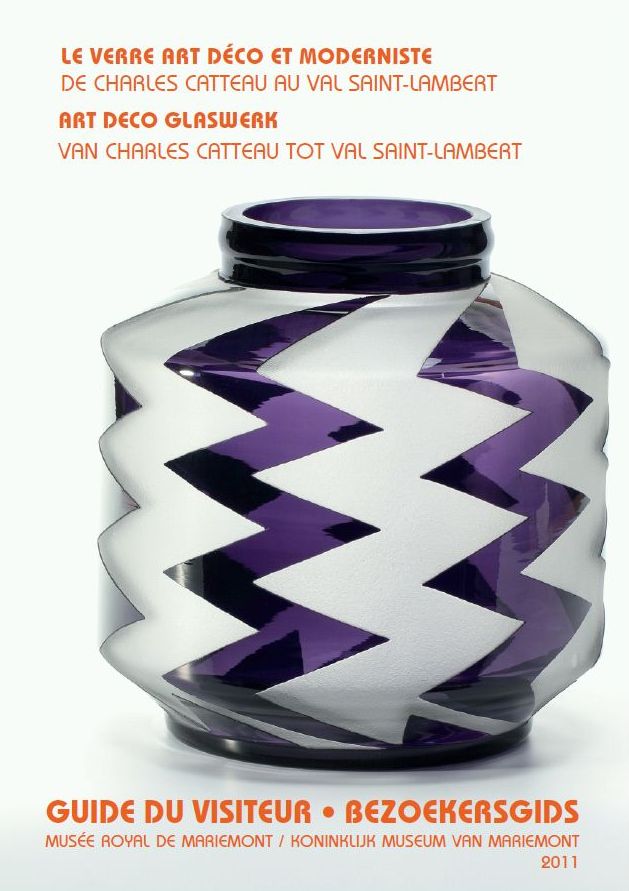
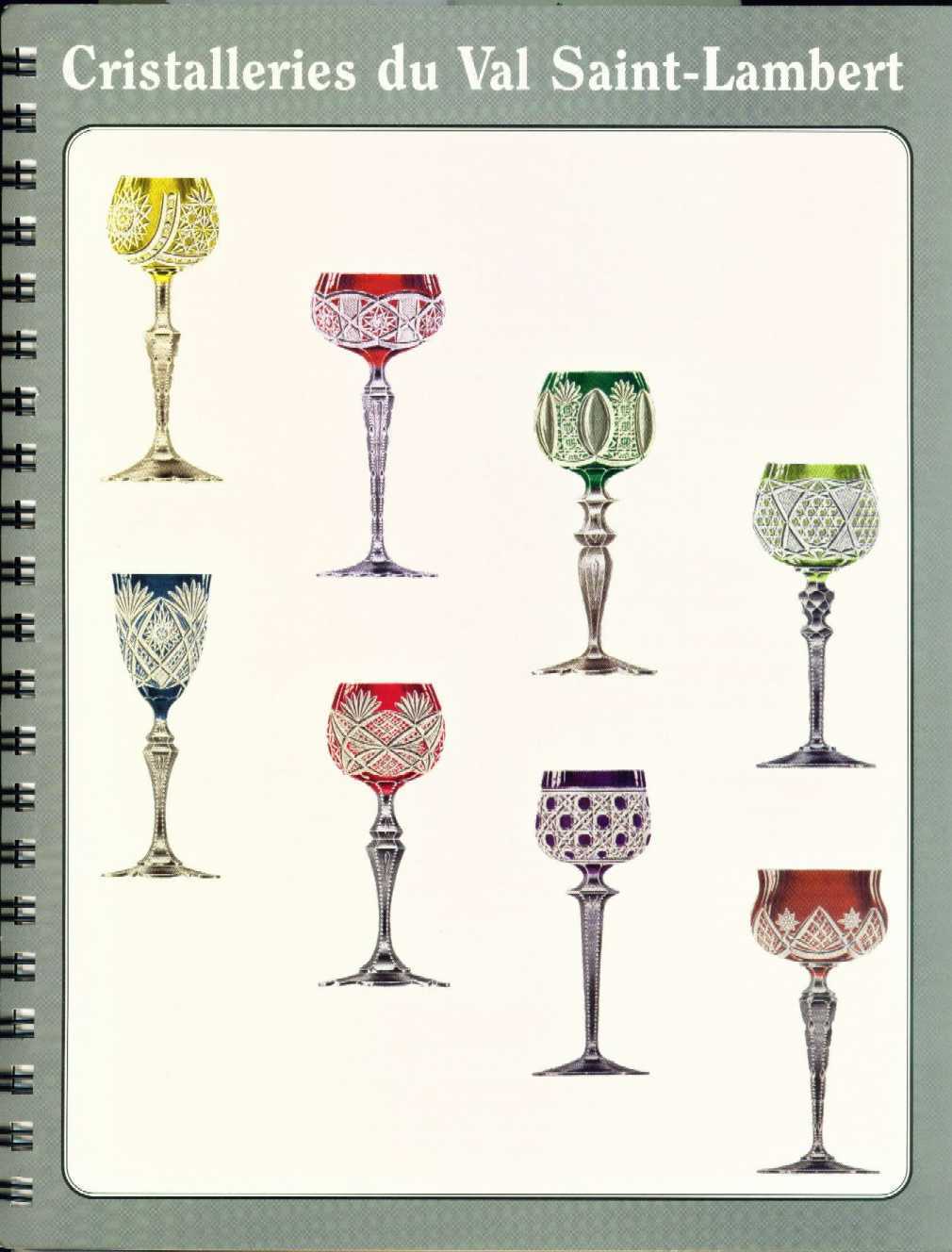
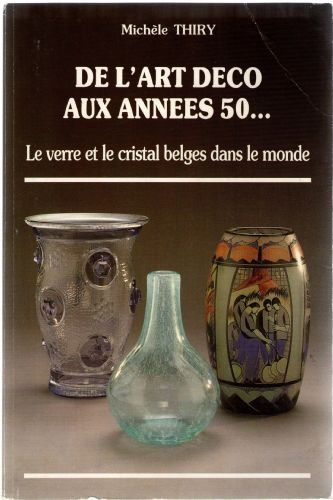
|
| Cut Crystal VSL's most enduring popularity and most recognisable product are its distinctive cut-crystal vases which updated the 19c style, using a tradition of cutting into cased glass, but applying new geometric patterns of cut for modernist tastes. It continued to be popular through the mid-century. Designs can be identified by shape,size, decor ('design' or 'cut') and colour. Basic model shapes are shown in the factory catalogues but were often suitable for multiple decors. The choice of highlight colour (called 'casing') is usually one of rhe 6 factory-standard colour-tints (although many other colours were used on an occassional basis). Each item was 'cut-to-clear' by hand; the cased clear crystal item held against the cutting-wheel, to cut and reveal a clear crystal base following the marks drawn onto the item by hand according to the pattern books. |
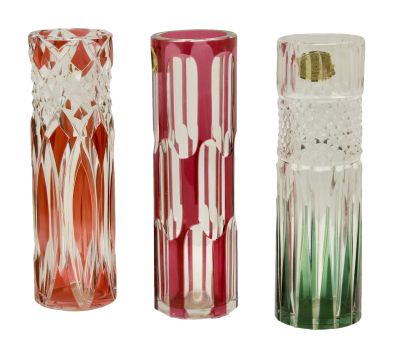
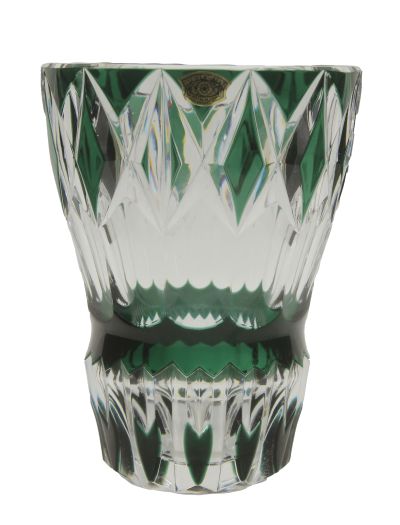
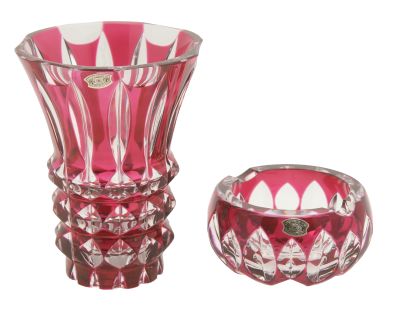
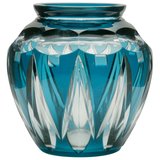
|
|
Best sellers included the VSL 'Luxval' range of pressed glass designed by Graffart and Delvenne, which took the mid-ground between Lalique's high quality hand-finished products and the practical quality of the German and Czech factories which were also producing popular (and cheap) designs of pressed glass. Glass for working homes was in great demand and produced in huge quantities. It has a distinctive character similar to other belgian art and design of the 1930s, distinctively Art Deco, and most was produced in only 5 colours. The range also included pressed glass birds and animals by Graffart and a large collection of candlesticks. |
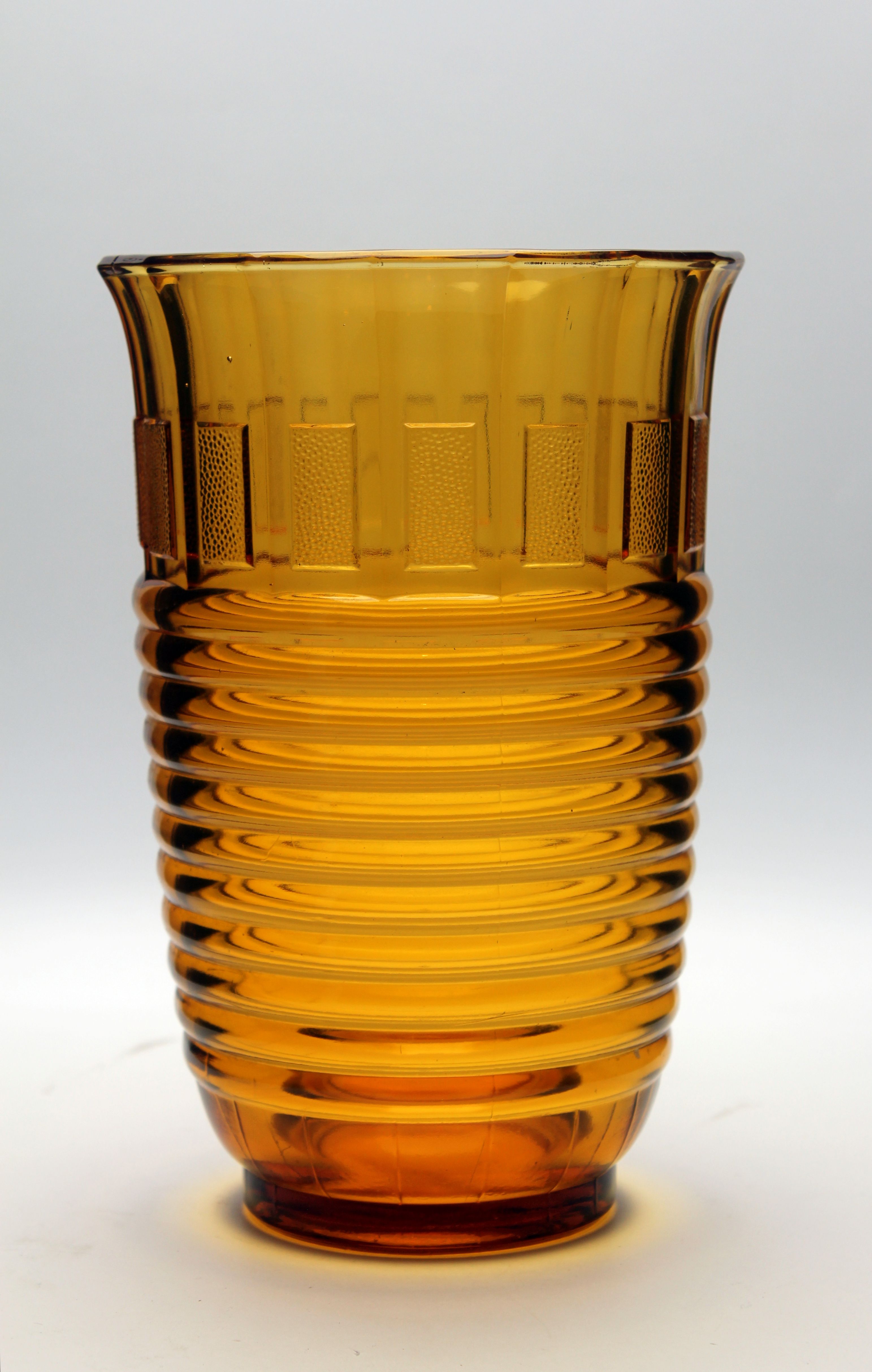
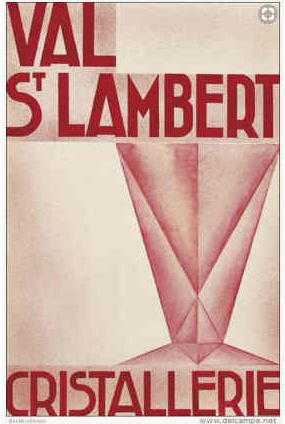
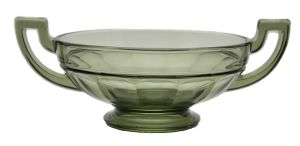
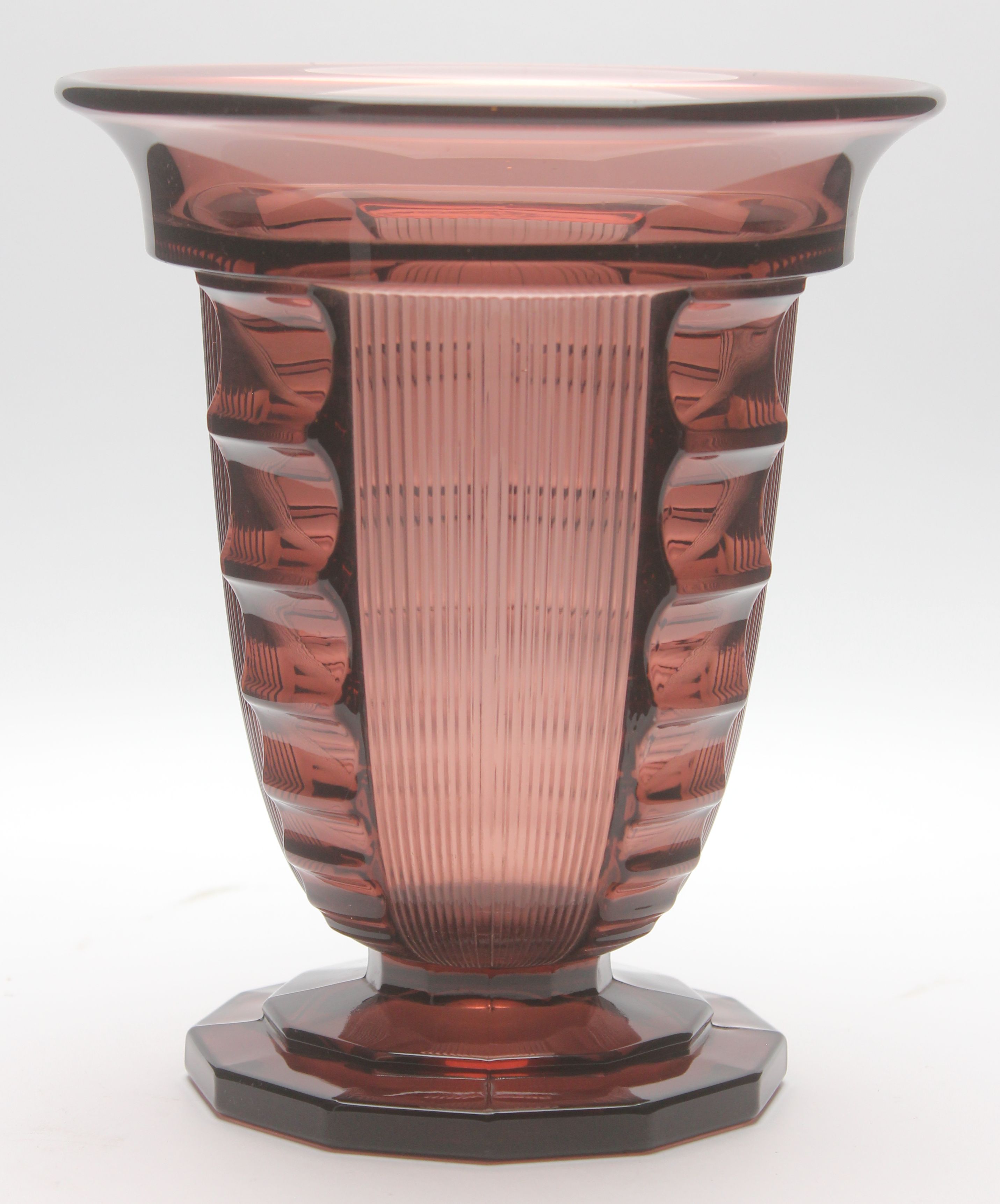
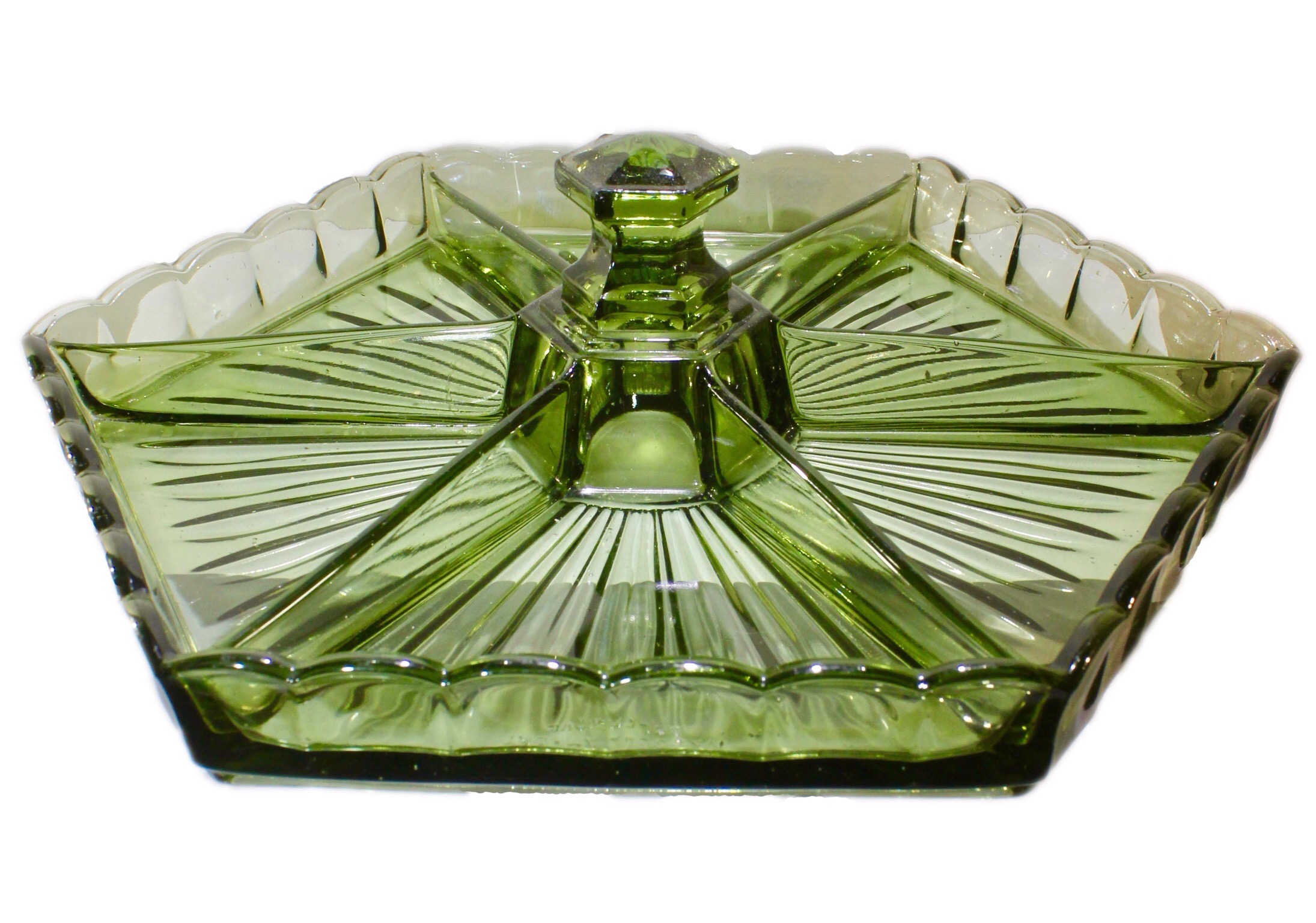
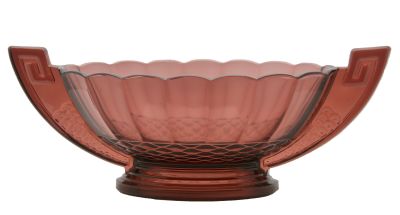
|
| After the war, with VSL's elaborately cut crystal went increasingly out of fashion, Italian workers led by Louis Barthelemy gave new energy as Delvenne introduced a more rounded and organic approach to the basic forms, clear heavy crystal was left uncut, and elements of brighter standard colours were twisted into spirals or elongated using hand-tongs. Swirling fluid designs for table-lamps, fruit bowls and ashtrays were very popular and sustained the factory through the early fifties. Other factories made similar style shifts (Maastricht, Daum,) and the company came under increasing competition for the international market. De Sorss made glass animal figurines/paperweights(lion, eagle, cat) but they failed to compete with Lalique's. |
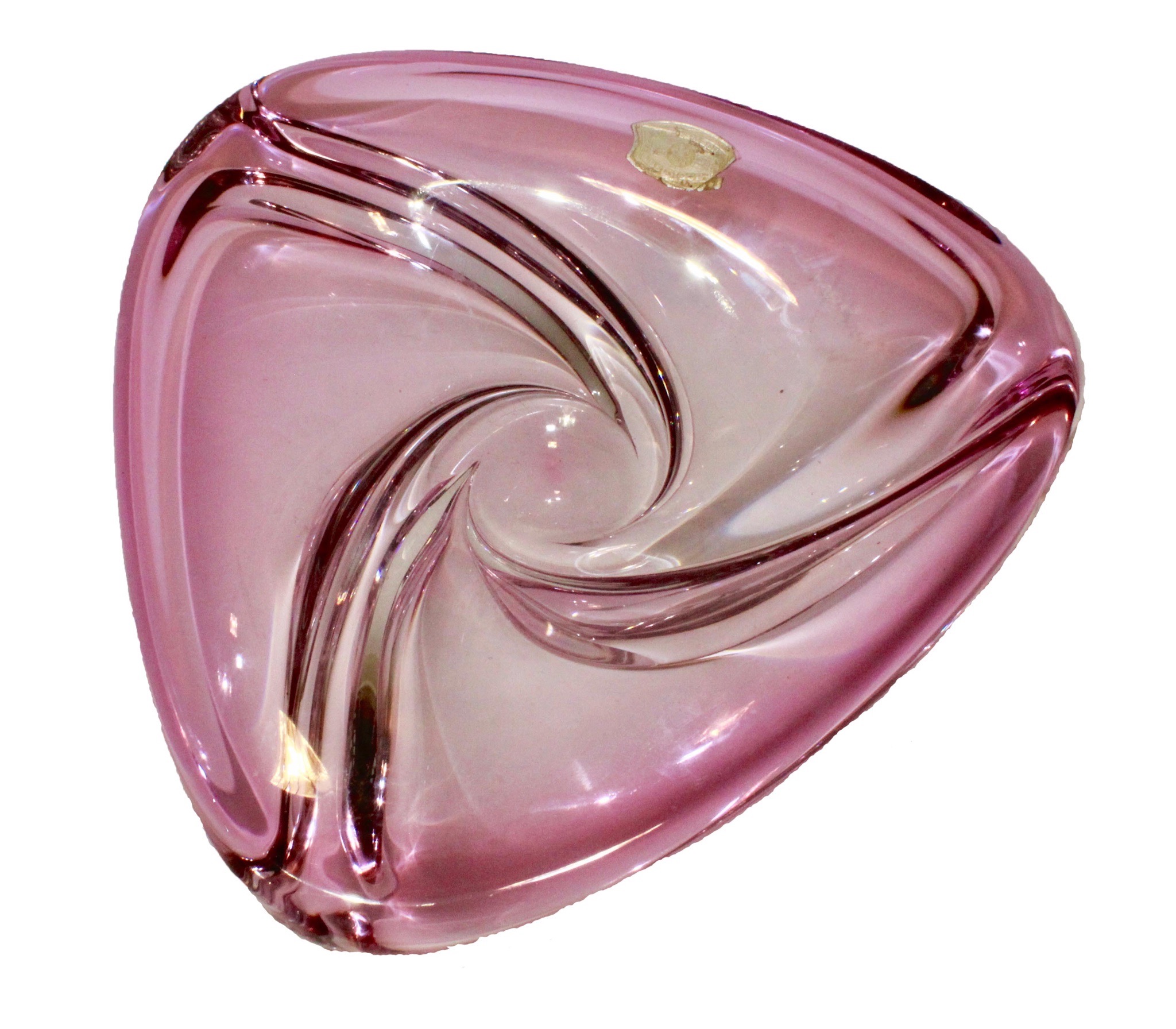
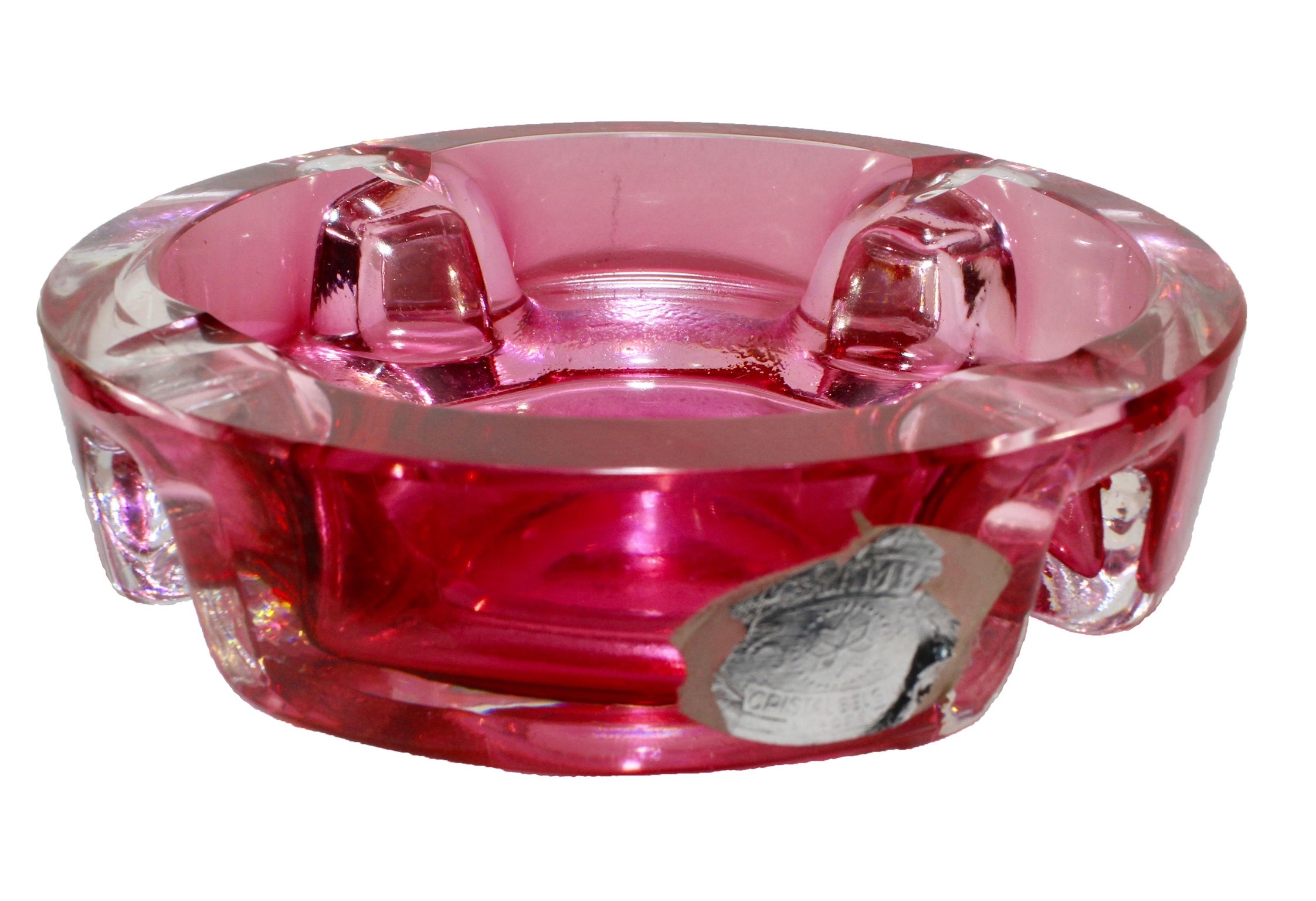
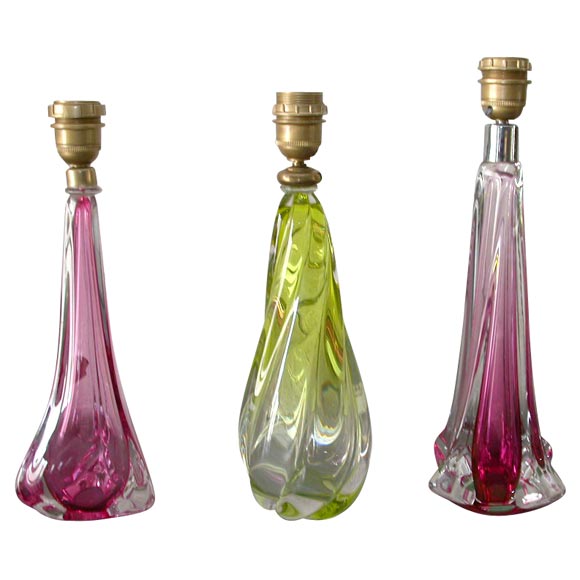
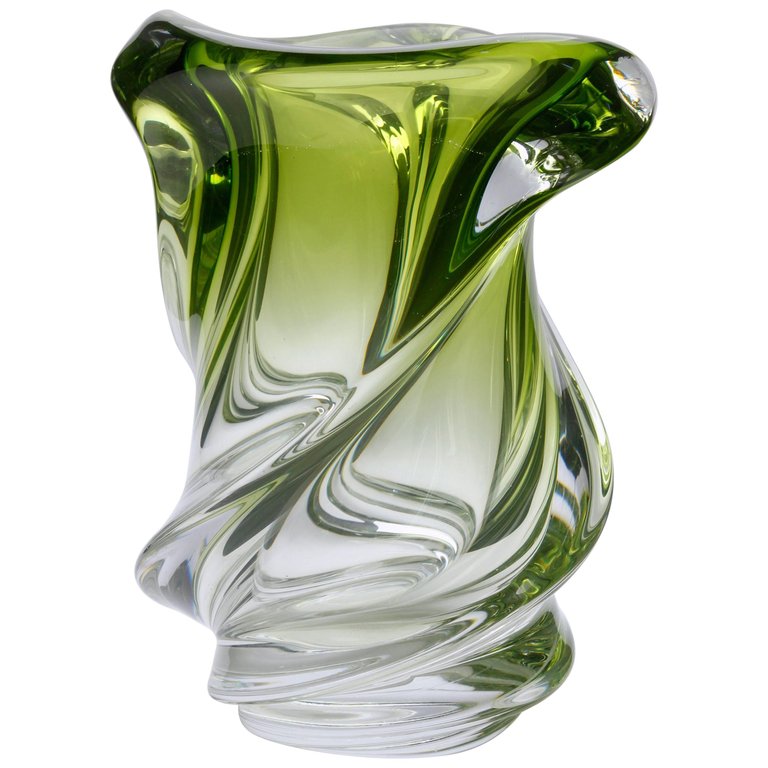
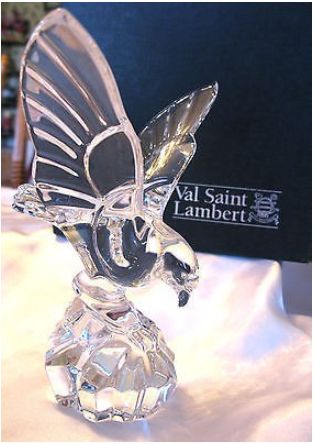
|
|
By the early 60's Louis Leloupe was inspiring new styles of decorating free-blown forms and hosting international glass artists incl. Nanny Stil (1966),Sam Herman (1970), Harvey Littleton (1972), Yan Zoritchak (1980) Erik Delvaux (1998), Borek Sipek, Philippe Starke. With the factory increasingly under-used, the last part of the century saw spasmodic production, repeated stops, the emergence of the 'Studio Val St Lambert' (and later 'Atelier du Val') which operated to maintain production of hand-made crystal products on the site, and introduced various guest artists who have visited and made work at the factory in the last three decades.
In 2003-2017 the factory continued under owner Sylvie Henquin with designer Edward Leibovitz, and taken over by George Forrest in 2018. |
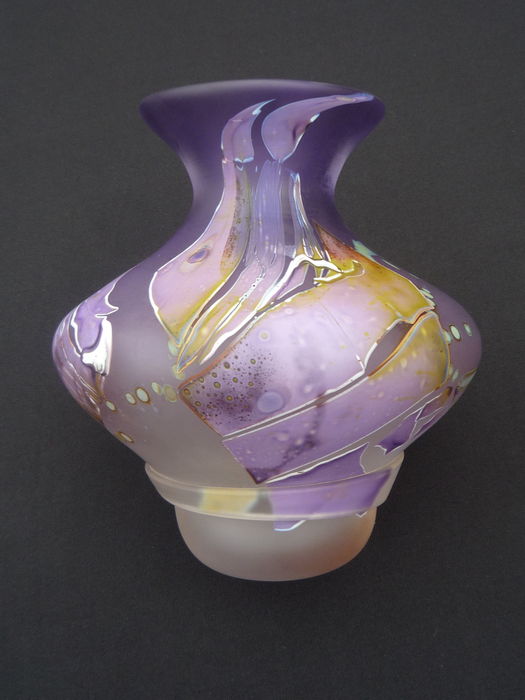
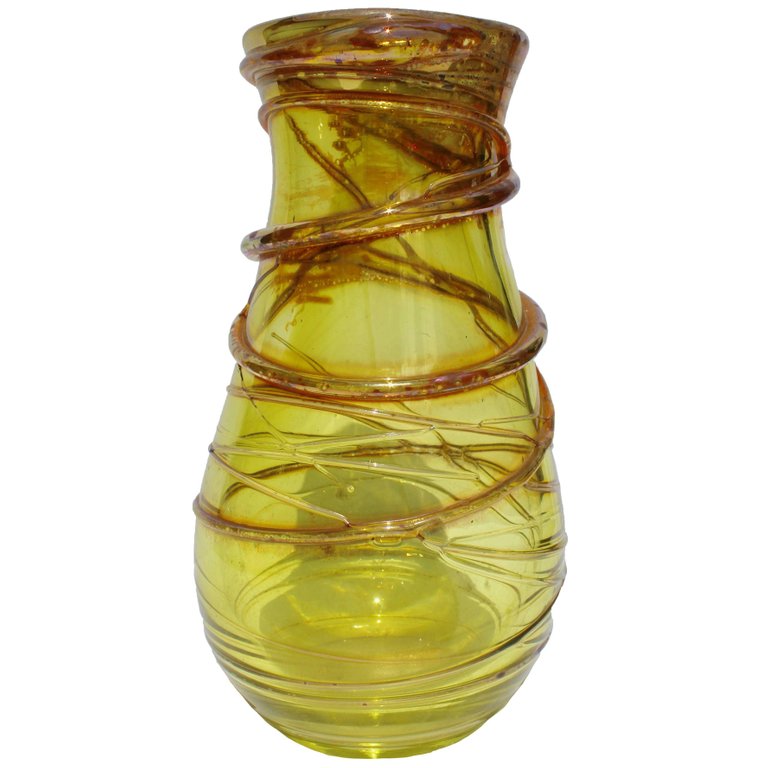
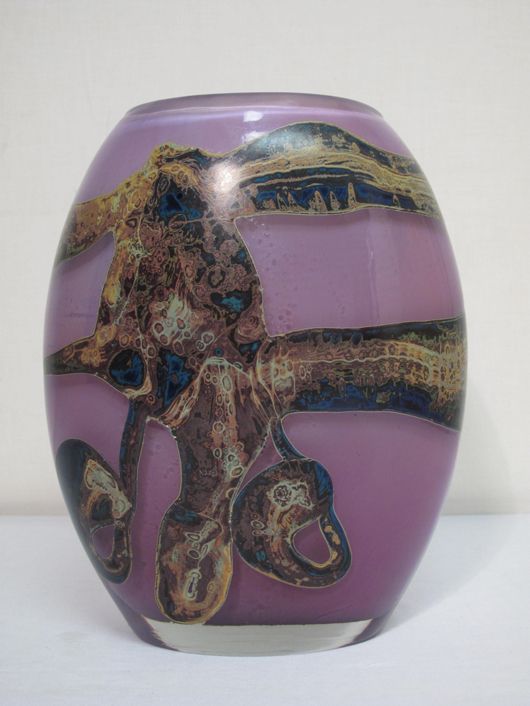
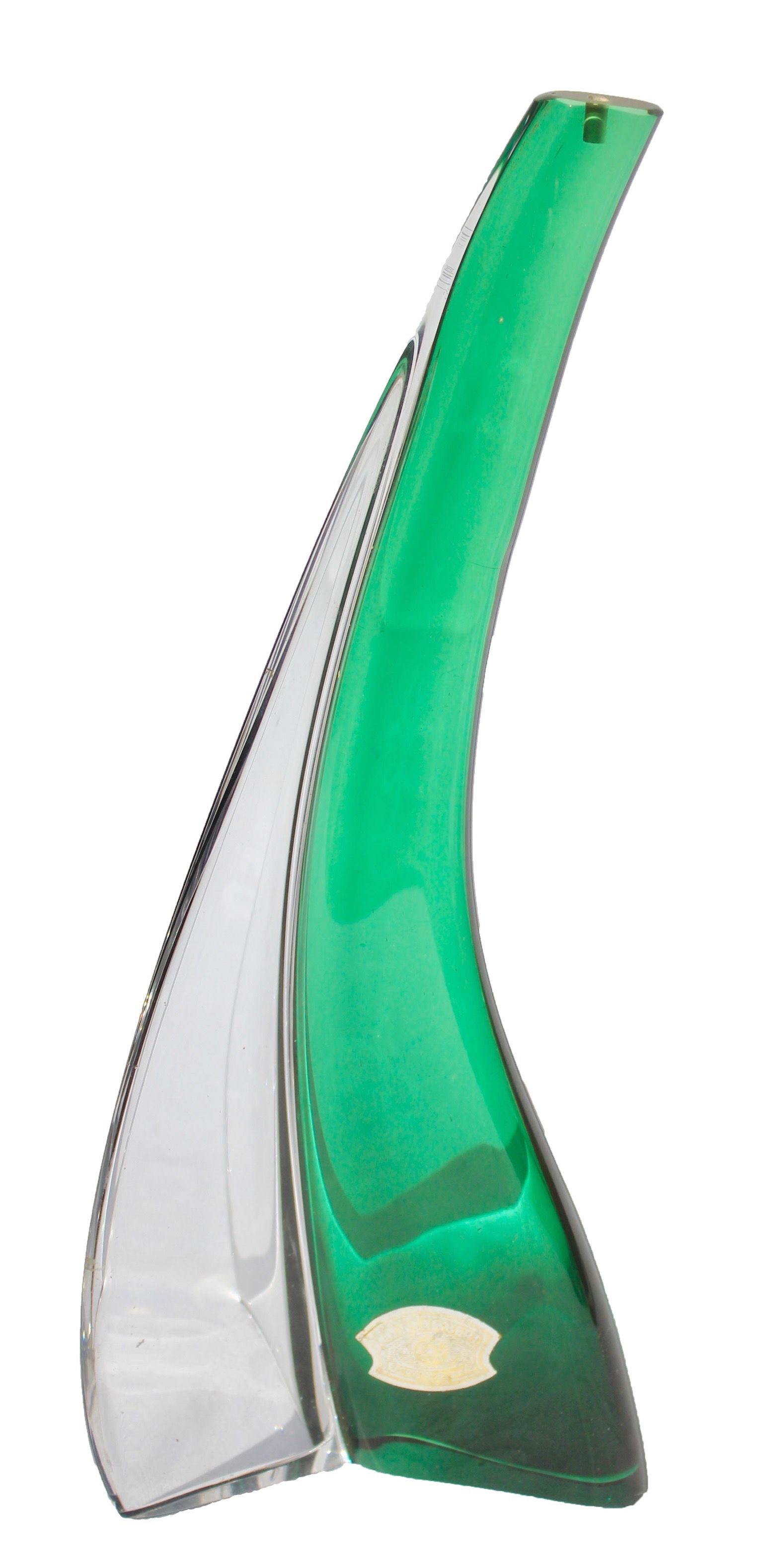
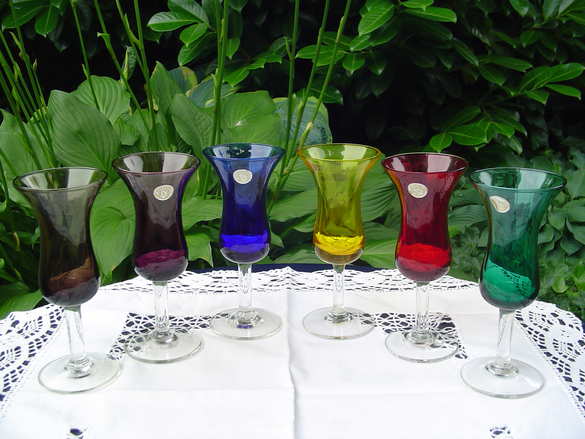
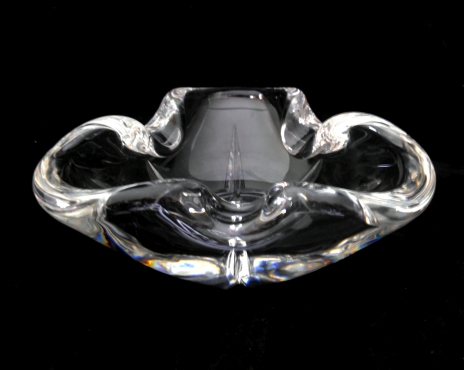
|
|
Labels and Marks Products were often labelled and signed 'Val St Lambert' (or 'VSL', 'Fait en Belgique' or 'Belgique') or sold under specific brandname/labels including Luxver, Verlux, Villencourt and Lega, even though these products were not always made at the site in Seraing. (Labels are shown on our 'Belgian Glass Labels page. Pressed marks which do not use these EXACT words should be regarded with suspicion. (See here) There are also plenty of genuine VSL items which were not marked in any way. Of course, many of the smaller factories also had a life before, outside, and after their contracts with VSL, so that the exact history of design production is sometimes obscured. Likewise designs, and especially moulds for pressed glass, were moved from one site to another as needed, and some moulds were also sold as part of bankruptcy. Many factory workers who left VSL, found work in other glass factories, taking skills and also designs with them. Secondary Market (2018) Val St Lambert has continued to have specialist collectors and dealers even in 2018. The cut crystal vases are valued according to size and condition, but seemingly the colour, and exact (early or late production) date, do not have great impact on prices. The desirability of VSL Luxval (pressed glass) is, in contrast, primarily determined by colour and pattern-rarity. Preferred standard colours are blue and green. Deprecated colours are pink (rosaline) and clear. Patterns can be identified using reproduced catalogues or online sites. In recent years there has been a dip in prices, but there are now signs that prices are slowly beginning to improve with increased interest from the internet/global market. Collectors & Dealers (2018) Factory catalogues were produced at a rate of up to three per year over a long period and many of the originals are currently archived and inaccessible. Some key catalogues (launching new collections) were reprinted for collectors and can still be traced through specialist book dealers. Although there are several substantial VSL books (and several editions of each) it is wise to choose carefully since some of them are very subjective, poorly illustrated, partial or introvert (and in French). There have been regular annual events specifically focussed on the factory's collectable glass under the name 'Foire du verre Val Saint Lambert'. (next scheduled to take place 4-5 May 2019 in the VSL Abbey, Seraing) The most useful sites for Luxval collectors are mostly in French. 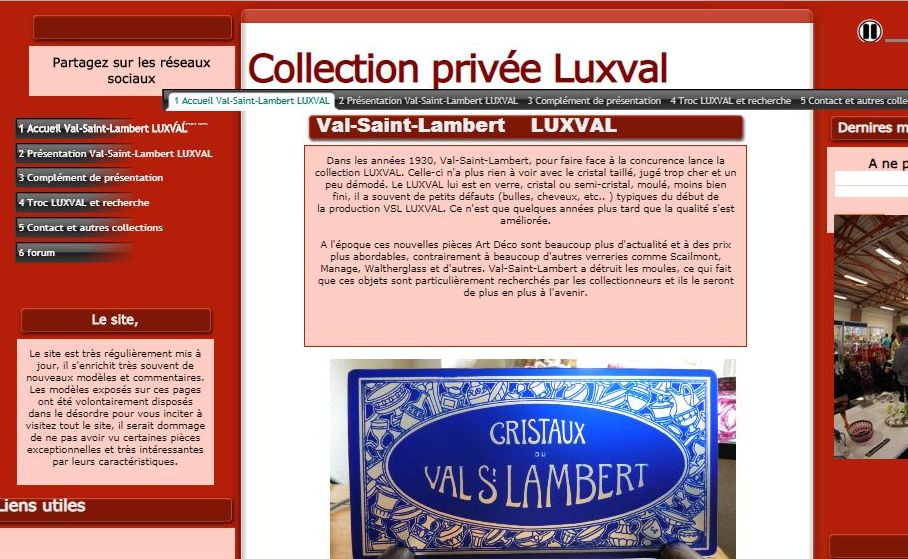
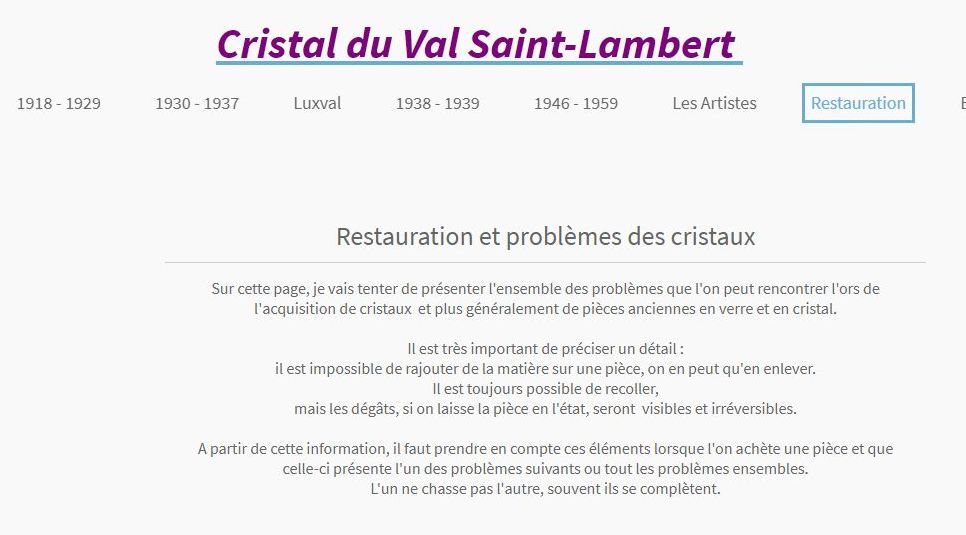
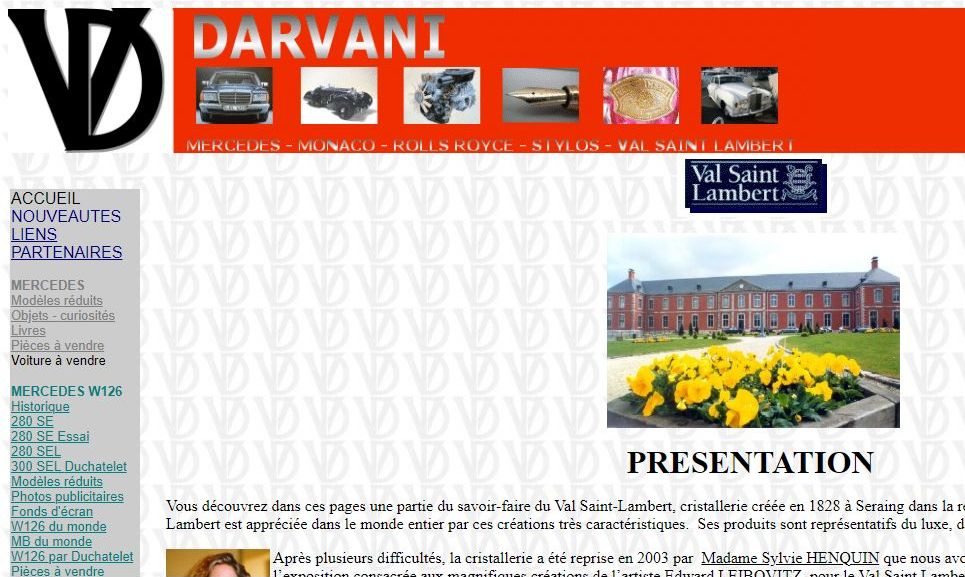
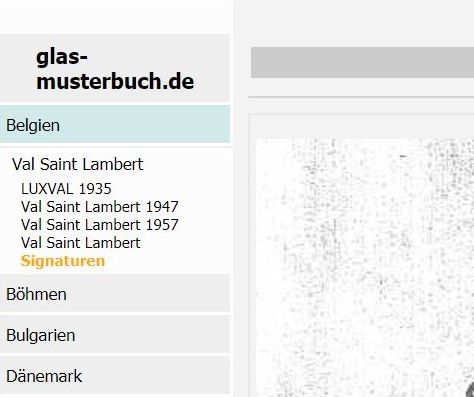
Visit Val St Lambert (2018) The factory site, currently run by 'Cristal Discovery' https://www.facebook.com/CristalDiscovery/ including the glass studio, crystal gallery and museum, is still open to visitors although the museum's collection and displays are quite limited. While it's pleasant and well-presented location for a short family visit, there are better collections of early VSL in other local museums (e.g. Curtius Museum, Liege). Prices for new items in the VSL Crystal Gallery are very high and disproportionate to any second-hand value. 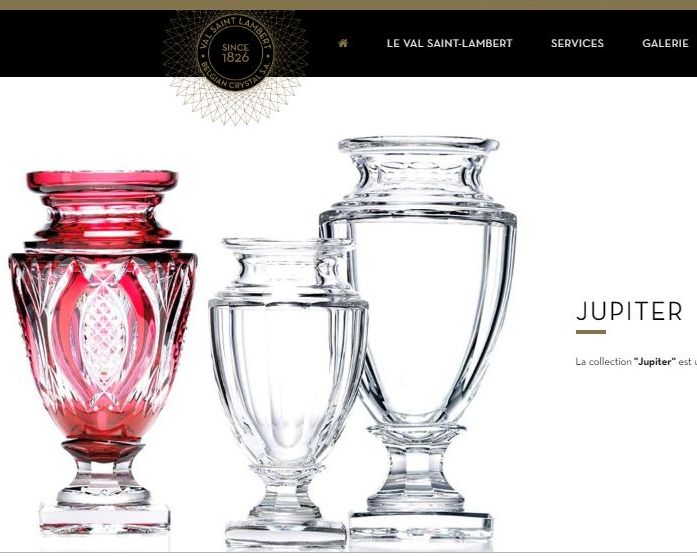
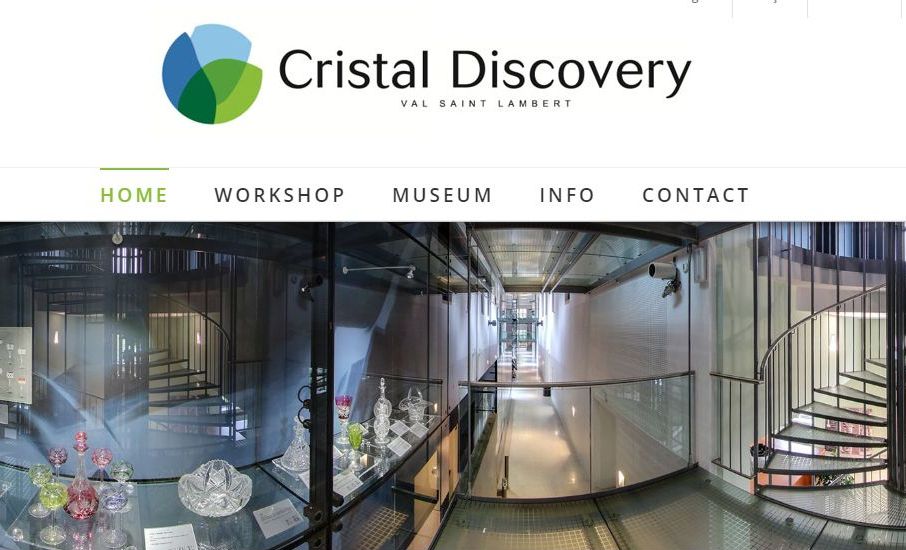
|
|
|
|
Copyright (C) Hogelandshoeve & McLellan-Verhoeven, 2019. All rights reserved and images copyright unless otherwise stated. |